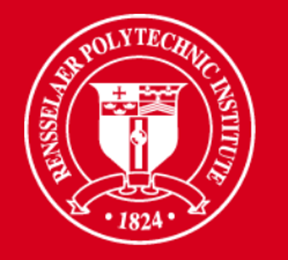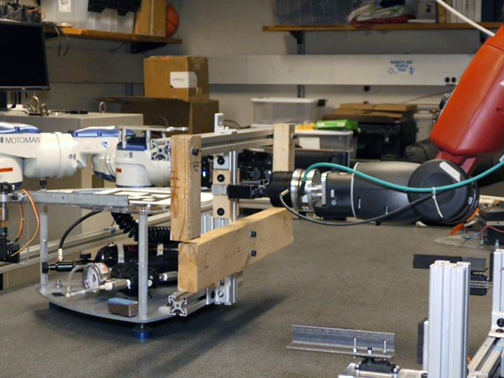
From the Rensselaer Polytechnic Institute's RPI News infosite comes an interesting posting entitled "Refueling Satellites in Space, With the Help of a Robot," authored by Torie Wells.
Many technologies that are essential for daily life — from communications to GPS navigation to weather forecasting — rely on the thousands of satellites that are orbiting Earth. When those satellites run out of gas and stop working, there’s not much that can currently be done to fix them.
“When a satellite runs out of fuel, and you don’t have a way to refuel it, that satellite stops working,” said John Wen, professor and head of the Department of Electrical, Computer, and Systems Engineering at Rensselaer Polytechnic Institute. “When that happens, a new satellite is launched to replace the existing satellite.”

The robotic arm project. Photo is courtesy of Rensselaer Polytechnic.
It’s a costly, time-consuming, and increasingly problematic reality as broken-down satellites become part of the growing population of space debris. A team of researchers at Rensselaer, led by Wen, are working with NASA on a solution: a robot that could capture a satellite in space and pull it in to dock, where it would refuel.
“Our part of the research is to specifically look at transporting a massive satellite, which is way beyond the capacity of this robot arm on Earth under gravity,” Wen said.
The robotic arm that is being built for NASA by Maxar Technologies (for the Restore-L spacecraft) is to be 7 feet long and thin in order to operate as efficiently as possible in space. The arm has gears and joints that will allow it to handle a large satellite. However, these components also introduce flexibility, Wen said, which adds another layer of complexity.
The researchers at Rensselaer are working with NASA to develop complex algorithms that will control the arm’s movement, enabling it to accurately transport and dock a satellite to a berthing station for refueling. Wen compares the problem to the difficultly of dragging a massive bus along the ice in a hockey rink. Much like the slick ice, the lack of gravity mitigates the challenge of moving a heavy object, but it doesn’t necessarily make the task of carefully controlling its movements much easier.
“There will be no human in space to intervene,” Wen said. “It’s all relying on the ground operator. So, we have to do extensive simulation both in software, as well as in hardware, to make sure this operation is safe.”
Those simulations are being done, both computationally and physically, in the Center for Automation Technologies and Systems Lab at Rensselaer. For physical simulations, the team uses an air bearing setup (an air hockey table, essentially) where a small satellite model can float along the surface, simulating a zero gravity environment. A smaller robotic arm models the movement that will need to take place in space.
To read the entire article, please access this direct Rensselaer infolink...
Founded in 1824, Rensselaer Polytechnic Institute is America’s first technological research university. Rensselaer encompasses five schools, 32 research centers, more than 145 academic programs, and a dynamic community made up of more than 7,900 students and more than 100,000 living alumni. Rensselaer faculty and alumni include more than 145 National Academy members, six members of the National Inventors Hall of Fame, six National Medal of Technology winners, five National Medal of Science winners, and a Nobel Prize winner in Physics. With nearly 200 years of experience advancing scientific and technological knowledge, Rensselaer remains focused on addressing global challenges with a spirit of ingenuity and collaboration.

